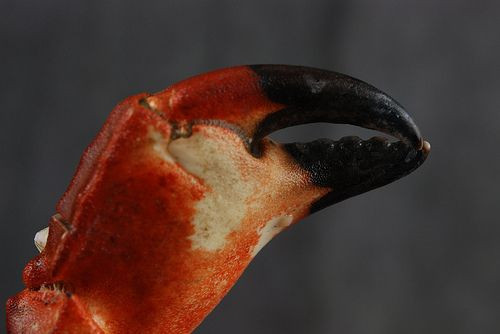27th Case Of Flesh-Eating Bacteria Confirmed; Elderly Florida Man Pinched By Crab

The 27th person to be infected with a flesh-eating bacteria known as Vibrio vulnificus is a 79-year-old man named George Clarke, who was pinched by a crab that was likely infected with the bacteria. Clarke is being treated at Baptist Medical Center in Jacksonville, Fla., where he is being treated with several different antibiotics to fight the bacteria.
The bacteria recently made headlines when a 59-year-old man was killed in September after setting crab traps in a river near Ormond Beach in Florida.
Vibrio vulnificus comes from the same family as bacteria that causes cholera, and thrive in seawater because they require salt to proliferate.
Dr. Jason Sniffen, an infectious disease specialist at Florida Hospital, told the Orlando Sentinel that the bacteria isn’t new; it’s been around for years, but hasn't received media attention until recently. The number of people who are infected by the bacteria as well as those who have died hasn’t fluctuated much in recent years, Sniffen said. In Florida, 13 people died from an infection in 2011, nine died in 2012, and so far an additional nine have died in Florida this year..
Nationwide, about 95 cases of Vibrio vulnificus infection occur annually, with some 85 hospitalizations and 35 deaths, many of them occurring in Florida.
Symptoms of ingesting Vibrio vulnificus can include diarrhea, stomachaches, and vomiting. The bacteria can also cause a skin infection and ulcers. People who are most likely to be affected are those with weakened immune systems. The bacteria enters the body either through eating contaminated seafood like raw oysters or exposing an open wound into warm waters in which the bacteria live.
The Centers for Disease Control and Prevention suggest to stay away from raw oysters or other types of shellfish, and to cook seafood and shellfish thoroughly. Be sure to avoid exposing wounds or even small cuts or bug bites in warm, salty waters, and to wear gloves or protective clothing when handling raw shellfish.
Published by Medicaldaily.com



























